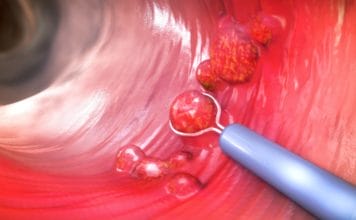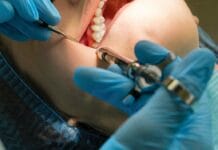Proper choice of instrument is crucial. Flexible shanks are great for the detection of subgingival calculus due to enhanced tactile sensitivity. Which of the following have flexible shanks?
The original Gracey curettes are designed with a flexible shank to provide improved tactile sensitivity. Explorers are designed in the same manner for optimal tactile sensitivity and diagnosis of carious lesions and residual calculus.
Bennett, B. (2007). All About Hand Instruments. Dimensions of Dental Hygiene. Retrieved from https://dimensionsofdentalhygiene.com/amp/article/all-about-hand-instruments/
Gracey 15/16 is a modification of the 13/14 with a more acutely angled shank. The extra angulation provides better adaptation.
“Gracey 15/16 is a modification of the 11/12 with a more acutely angled shank to access the mesial surfaces of posterior teeth, especially the mandibular premolars. The extra angulation allows better adaptation and a more stable intraoral fulcrum.”
LM Instruments has a newly released Gracey 15/16 in their Sharpen Free LM Sharp DiamondÔ Instrument line. This line of instruments has an ultra-hard coating that keeps them sharp, with a silicone ergonomic grip for optimal comfort and tactile sensitivity. The handle uses premium-quality silicone that makes them lighter and more responsive. The coating, Physical Vapor Deposition (PVD) technology bonds a diamond-like micro-coating protects the edge, providing a more effective instrument for a longer duration.
Bennett, B. (2007). All About Hand Instruments. Dimensions of Dental Hygiene. Retrieved from https://dimensionsofdentalhygiene.com/amp/article/all-about-hand-instruments/
LM Dental. LM Sharp DiamondÔ Coated Instruments. Retrieved from https://lm-dental.com/en-us/products/hand-instrumentation/periodontics/sharp-diamond-coated-instruments/
All of the following describes the design of a sickle scaler with the exception of which design detail?
Sickle scalers design includes a triangular cross-section, face perpendicular to the lower shank, two cutting edges, and pointed tip. They are designed to be used anterior and posterior for interproximal supragingival deposits.
LM Dental. Sickle Scalers. Retrieved from https://lm-dental.com/en-us/products/hand-instrumentation/periodontics/sickle-scalers/
Hodges, K.O. (2020). Can Sickle Scalers Be Used Subgingivally for Light and Heavy Scaling? Dimensions of Dental Hygiene. Retrieved from https://dimensionsofdentalhygiene.com/article/can-sickle-scalers-be-used-subgingivally-for-light-and-heavy-scaling/
Which instrument is the best choice when trying to reach the midline of the maxillary first molar?
Long-ended universal curettes extend approximately 5mm toward the midline of the tooth, while area-specific curettes do not extend as far and are unlikely to reach the midline of the tooth. Though sickle scalers and universal scalers can be used subgingivally in specific cases, reaching the midline of the tooth is not achievable with these instruments due to their shorter shank.
Hodges, K.O. (2019). Tips for Instrumenting First Molar Teeth. Dimensions of Dental Hygiene. Retrieved from https://dimensionsofdentalhygiene.com/article/instrumenting-first-molar-teeth/
Pinch force is the pinching between the thumb and index finger during dental scaling. Ergonomic handle design can greatly reduce excessive pinchforce.
Pinch force is defined as the force exerted between the thumb and forefinger when pinching or gripping. Studies show increased pinch force is associated with musculoskeletal disorders (MSDs), including but not limited to carpal tunnel. Ergonomic instrument design can greatly reduce the prevalence of MSDs by also reducing the need for excessive pinch force. Using sharp instruments reduces the required amount of pinch force.
Hayes, M., Cockrell, D., Smith, D.R. A systematic review of musculoskeletal disorders among dental professionals. Int J Dent Hyg. 2009; 7(3): 159-65. doi:10.1111/j.1601-5037.2009.00395.x. PMID: 19659711. Retrieved from https://pubmed.ncbi.nlm.nih.gov/19659711/
Gehrig, J.S., Sroda, R., Saccuzzo, D. Fundamentals of Periodontal Instrumentation & Advanced Root Instrumentation. 8th ed. Wolters Kluwer; 2019.
Which of the following describes a universal curette?
Universal curettes are designed for all areas and surfaces, both cutting edges used work with either outer or inner edge, curved in one plane, blade curves up, not to the side, and blade not offset, and the face of the blade is beveled at 90 degrees to the shank.
Pattison, G., Pattison, A. Periodontal Instrumentation, ed 2, Norwalk, CT, 1992, Appleton & Lange.
The Gracey 5/6 is designed to be used for which teeth/surfaces?
Gracey 1/2 and 3/4 are designed for anterior teeth only, Gracey 5/6 is designed for anterior teeth and premolars, Gracey 7/8 and 9/10 are designed for posterior teeth; facial and lingual, and Gracey 11/12 is designed for posterior teeth; mesial.
Gehrig, J.S., Sroda, R., Saccuzzo, D. Fundamentals of Periodontal Instrumentation & Advanced Root Instrumentation. 8th ed. Wolters Kluwer; 2019.
Mini Graceys are ideal for periodontal maintenance patients. They are designed for better adaptation in which of the following?
Mini Graceys are the smallest of all curettes, which allows them to provide great access and adaptation in difficult areas such as tight and narrow pockets, narrow furcations, developmental depressions, and line angles.
Gehrig, J.S., Sroda, R., Saccuzzo, D. Fundamentals of Periodontal Instrumentation & Advanced Root Instrumentation. 8th ed. Wolters Kluwer; 2019.
Adaptation refers to the alignment of an instrument against a tooth before activation of an exploratory or working stroke.
The definition of adaptation, as defined by the Medical Dictionary for the Dental Professions (2012) is, ”Alignment of an instrument against a tooth before activation of an exploratory or working stroke.”
Instrument Adaptation. (2012). Farlex Partner Medical Dictionary. Retrieved from https://medical-dictionary.thefreedictionary.com/instrument+adaptation
What is the correct angulation for scaling and root planing?
Zero degree is the correct angulation for blade insertion, 45-90 degrees is the proper angulation for scaling and root planing. Less than 45 degrees is incorrect angulation for root planing. More than 90 degrees is incorrect angulation for scaling and root planing, but it is correct for gingival curettage.
Gehrig, J.S., Sroda, R., Saccuzzo, D. Fundamentals of Periodontal Instrumentation & Advanced Root Instrumentation. 8th ed. Wolters Kluwer; 2019.












